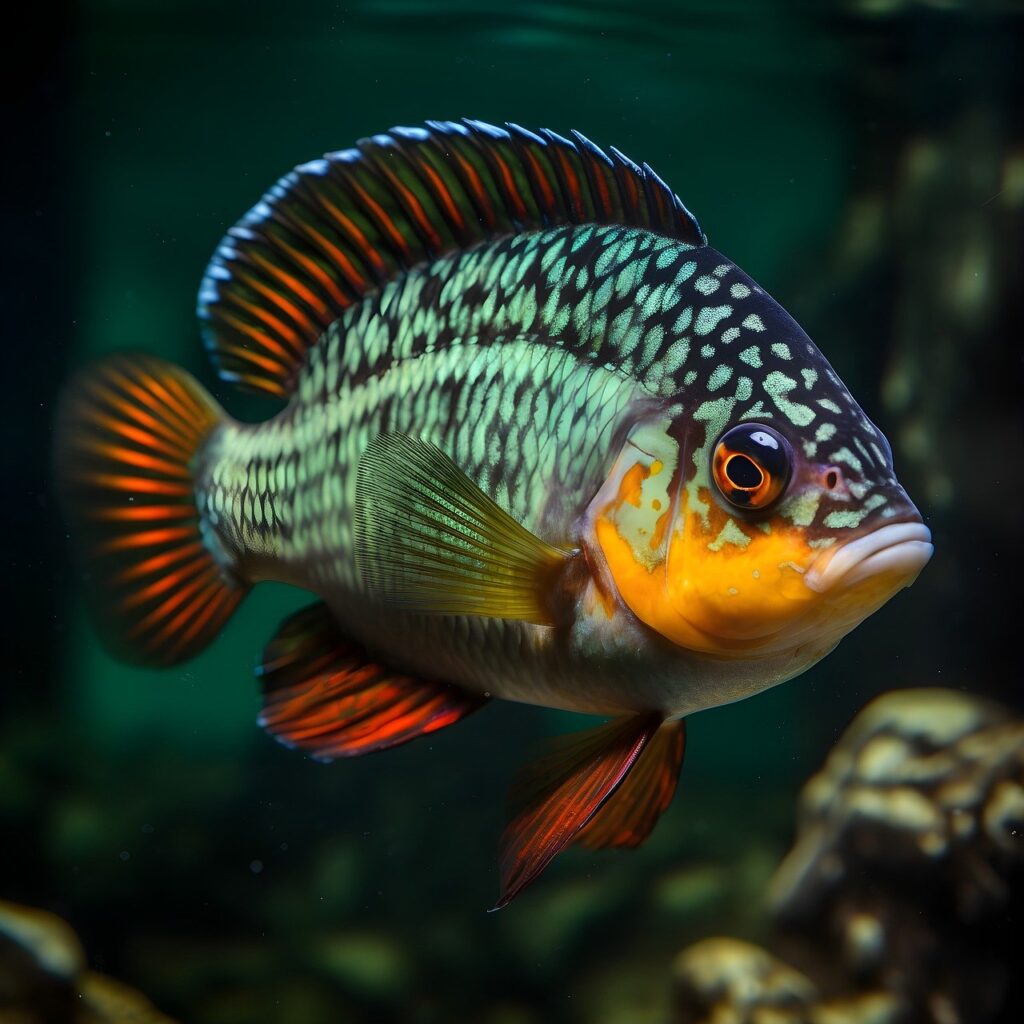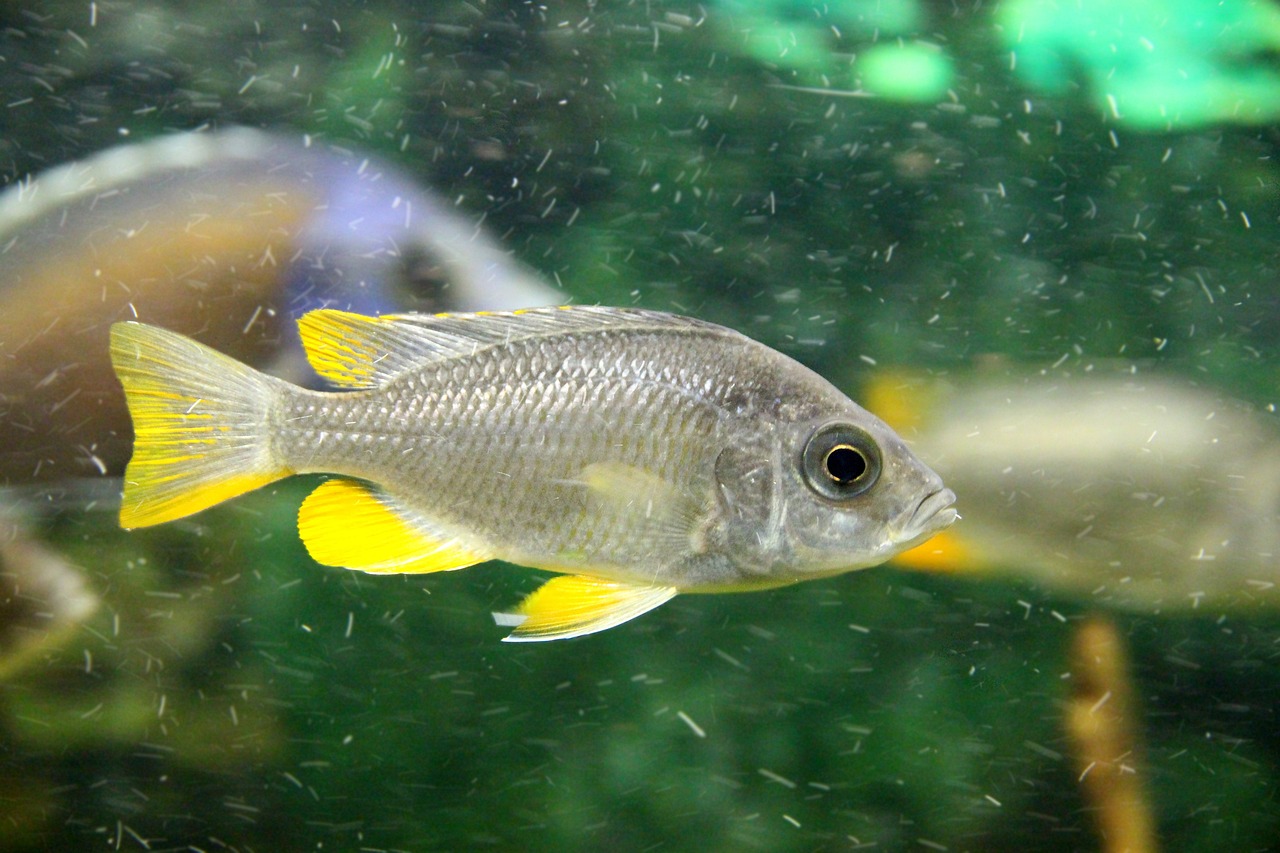The Green Terror Cichlid (Andinoacara rivulatus) is a strikingly beautiful freshwater fish that captivates aquarists with its vibrant colors and engaging personality. Known for their dynamic behavior and unique breeding habits, these cichlids are a favorite among both novice and experienced fish enthusiasts. In this comprehensive guide, we will explore the care tips and breeding techniques essential for keeping Green Terror Cichlids, helping you create an ideal environment for these fascinating fish.
Understanding the Green Terror Cichlid
1. Origin and Habitat
Green Terror Cichlids are native to the rivers and streams of South America, particularly found in Ecuador and Peru. In their natural habitat, they inhabit areas with plenty of vegetation, rocky substrates, and flowing waters, which provide both shelter and breeding grounds. This background informs much of their care requirements and behaviors in an aquarium setting.
2. Physical Characteristics
Green Terror Cichlids are easily recognizable due to their striking appearance. They typically display:
- Coloration: A vibrant mix of green, blue, and yellow hues, with iridescent scales that shimmer under light.
- Size: Adults usually reach about 5 to 6 inches in length, though some can grow slightly larger.
- Shape: They have a relatively deep, compressed body with a distinctive elongated dorsal fin.
3. Behavior and Temperament
These cichlids are known for their semi-aggressive nature. They can be territorial, especially during breeding periods. Understanding their behavior is crucial for ensuring a harmonious aquarium environment.
Care Tips for Green Terror Cichlids
1. Tank Setup
Creating the right environment is vital for the health and happiness of your Green Terror Cichlids:
- Tank Size: A minimum of 30 gallons is recommended for a single Green Terror, with larger tanks being preferable for groups or if you plan to keep tank mates.
- Substrate: Use a fine gravel or sand substrate that mimics their natural habitat, allowing for digging and burrowing.
- Decorations: Incorporate rocks, caves, and driftwood to provide hiding spots and territory markers. Plants can also enhance the environment but should be hardy enough to withstand potential uprooting.
2. Water Conditions
Maintaining optimal water quality is crucial for the well-being of your Green Terror Cichlids:
- Temperature: Keep the water temperature between 75°F and 82°F (24°C to 28°C).
- pH Level: A pH level between 6.5 and 8.0 is ideal, with slightly alkaline conditions being preferable.
- Hardness: Aim for a water hardness of 5 to 15 dGH.
- Filtration: A robust filtration system is necessary to manage waste, as these fish can produce a significant amount of it.
3. Dietary Needs
Green Terror Cichlids are omnivorous and require a varied diet:
- Quality Pellets: A high-quality cichlid pellet should be the staple of their diet.
- Frozen and Live Foods: Supplement their diet with frozen or live foods like brine shrimp, bloodworms, and daphnia.
- Vegetables: Occasionally offer blanched vegetables, such as zucchini or spinach, to provide essential nutrients.
4. Tank Mates
Choosing the right tank mates can enhance the community experience:
- Compatible Species: Other semi-aggressive cichlids, larger barbs, or certain tetras can coexist well with Green Terror Cichlids.
- Avoiding Aggression: Avoid small fish or overly peaceful species, as these may become targets for aggression.
Breeding Green Terror Cichlids
Breeding Green Terror Cichlids can be a rewarding experience for enthusiasts. Here’s how to facilitate successful breeding:
1. Identifying Males and Females
Distinguishing between male and female Green Terrors is key to breeding:
- Males: Typically larger, more colorful, and have a more pronounced nuchal hump.
- Females: Generally smaller with a less vibrant coloration and smaller dorsal fin.
2. Preparing for Breeding
To encourage breeding, provide suitable conditions:
- Breeding Tank: Set up a separate breeding tank with similar water conditions to reduce stress.
- Hiding Places: Include flat rocks or caves where the female can lay eggs, as they prefer to spawn in secluded areas.
- Conditioning: Feed both the male and female a high-protein diet for a few weeks to condition them for breeding.
3. Breeding Process
When ready to breed, the following process typically occurs:
- Courtship Behavior: Males will display to females, showcasing their colors and engaging in dances.
- Spawning: Once the female is receptive, she will lay eggs on a flat surface. Males will fertilize the eggs shortly after.
- Parental Care: Green Terror Cichlids exhibit excellent parental care. Both parents will guard the eggs and fry, becoming territorial if necessary.
4. Caring for Fry
Once the eggs hatch (usually within 3 to 4 days), it’s important to care for the fry properly:
- Fry Food: Feed them finely crushed flakes or specialized fry food. As they grow, gradually introduce larger foods.
- Separate Tank: Consider moving the fry to a separate tank to prevent aggression from the parents and to ensure they have enough food.

Common Challenges
While Green Terror Cichlids can be rewarding, there are challenges to be aware of:
1. Aggression and Territorial Behavior
Monitor the behavior of your cichlids closely, especially during breeding. If aggression becomes excessive, consider rearranging tank decor to disrupt established territories or separating aggressive individuals.
2. Water Quality Management
Regular water changes (at least 25% weekly) are essential to maintain water quality. Test water parameters frequently to ensure they remain within the ideal range.
3. Health Issues
Common health issues include ich, fin rot, and other stress-related conditions. Maintain proper water conditions and a varied diet to minimize health problems.
Conclusion
Green Terror Cichlids are not only visually stunning but also offer an engaging experience for aquarists. With their captivating behavior, vibrant colors, and unique breeding practices, these cichlids can be a fantastic addition to any freshwater aquarium. By following the care tips and breeding techniques outlined in this guide, enthusiasts can create a thriving environment that supports the health and happiness of their Green Terrors.
As you embark on your journey with these remarkable fish, remember to embrace the learning process and enjoy the rewarding experience of keeping Green Terror Cichlids. Whether you’re nurturing a community tank or exploring the intricacies of breeding, these fish are sure to bring joy and excitement to your aquatic adventure.
FAQs
1. What is a Green Terror Cichlid?
The Green Terror Cichlid (Andinoacara rivulatus) is a freshwater fish known for its vibrant colors and engaging personality. Native to South America, it is a popular choice among aquarists for both its beauty and behavior.
2. How big do Green Terror Cichlids get?
Green Terror Cichlids typically grow to about 5 to 6 inches in length, although some individuals may reach slightly larger sizes.
3. What are the ideal water conditions for Green Terror Cichlids?
The ideal water conditions include a temperature range of 75°F to 82°F (24°C to 28°C), a pH level between 6.5 and 8.0, and a hardness of 5 to 15 dGH. Regular water changes are important to maintain quality.
4. Can Green Terror Cichlids live with other fish?
Yes, they can coexist with other semi-aggressive fish, larger barbs, and certain tetras. However, it’s important to avoid small or overly peaceful species to prevent aggression.
5. What do Green Terror Cichlids eat?
Green Terror Cichlids are omnivorous. Their diet should consist of high-quality cichlid pellets, supplemented with frozen or live foods like brine shrimp and bloodworms, as well as blanched vegetables.
6. How can I tell the difference between male and female Green Terror Cichlids?
Males are generally larger, more colorful, and have a more pronounced nuchal hump compared to females, who are smaller and less vibrant.
7. What is the breeding process like for Green Terror Cichlids?
Breeding involves courtship displays, followed by the female laying eggs on a flat surface, which the male fertilizes. Both parents typically exhibit strong parental care, guarding the eggs and fry.














